Analysis of the Poem Mookari: Subject Matter, Mood, Imagery, Language
VerifiedAdded on 2021/09/09
|5
|816
|406
Essay
AI Summary
This essay provides a comprehensive analysis of Daniel Davis's poem "Mookari," examining it through the SMILE technique (Subject matter, Mood, Imagery, Language, and Evaluation). The analysis explores the poem's depiction of a storm, referred to as 'mookari' in the Baradah clan, and its significance in the context of Australia's recognition of Indigenous culture. The essay delves into the poem's use of simple English to describe the storm's progression, from the initial somber tone to the awe-inspiring depiction of the storm's power and the eventual return to a serene atmosphere. The analysis highlights Davis's effective use of imagery, particularly personification, where the storm is personified as an 'old man,' and the utilization of poetic devices such as alliteration, anaphora, rhyme, and hyperbole. The essay concludes that the poem's simplicity and emotional impact make it relatable, especially to the Indigenous community, capturing the grandeur and power of nature.
1 out of 5
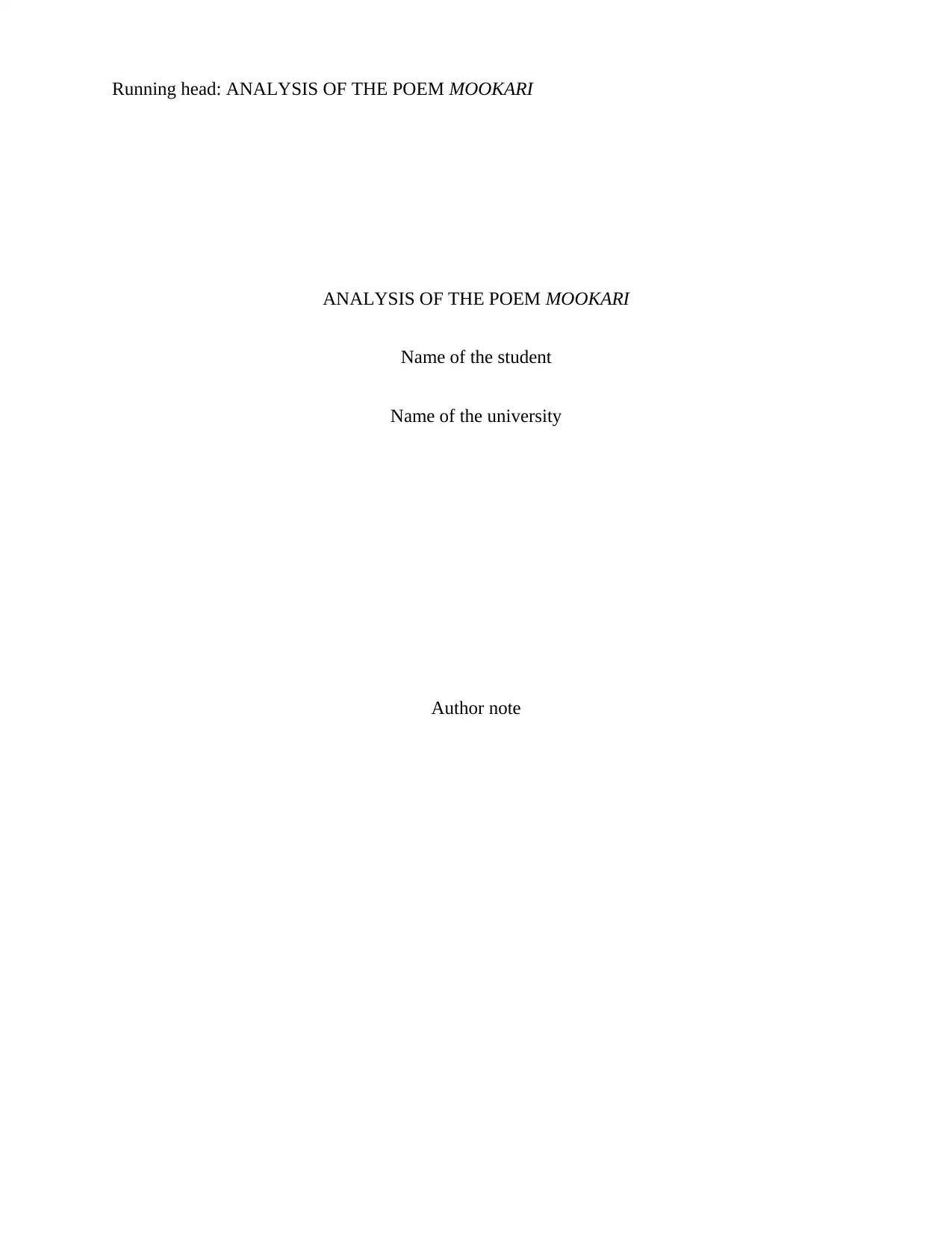
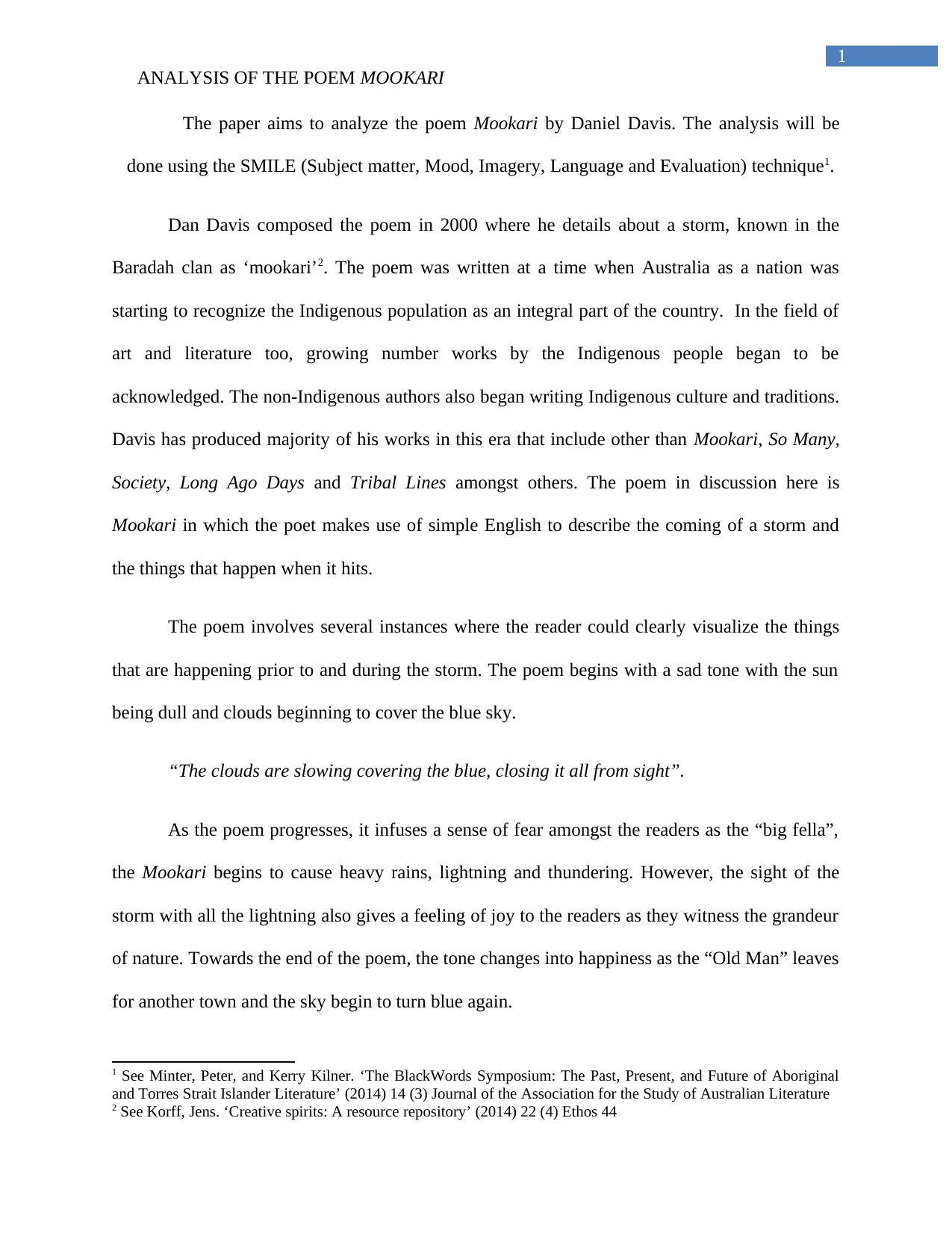
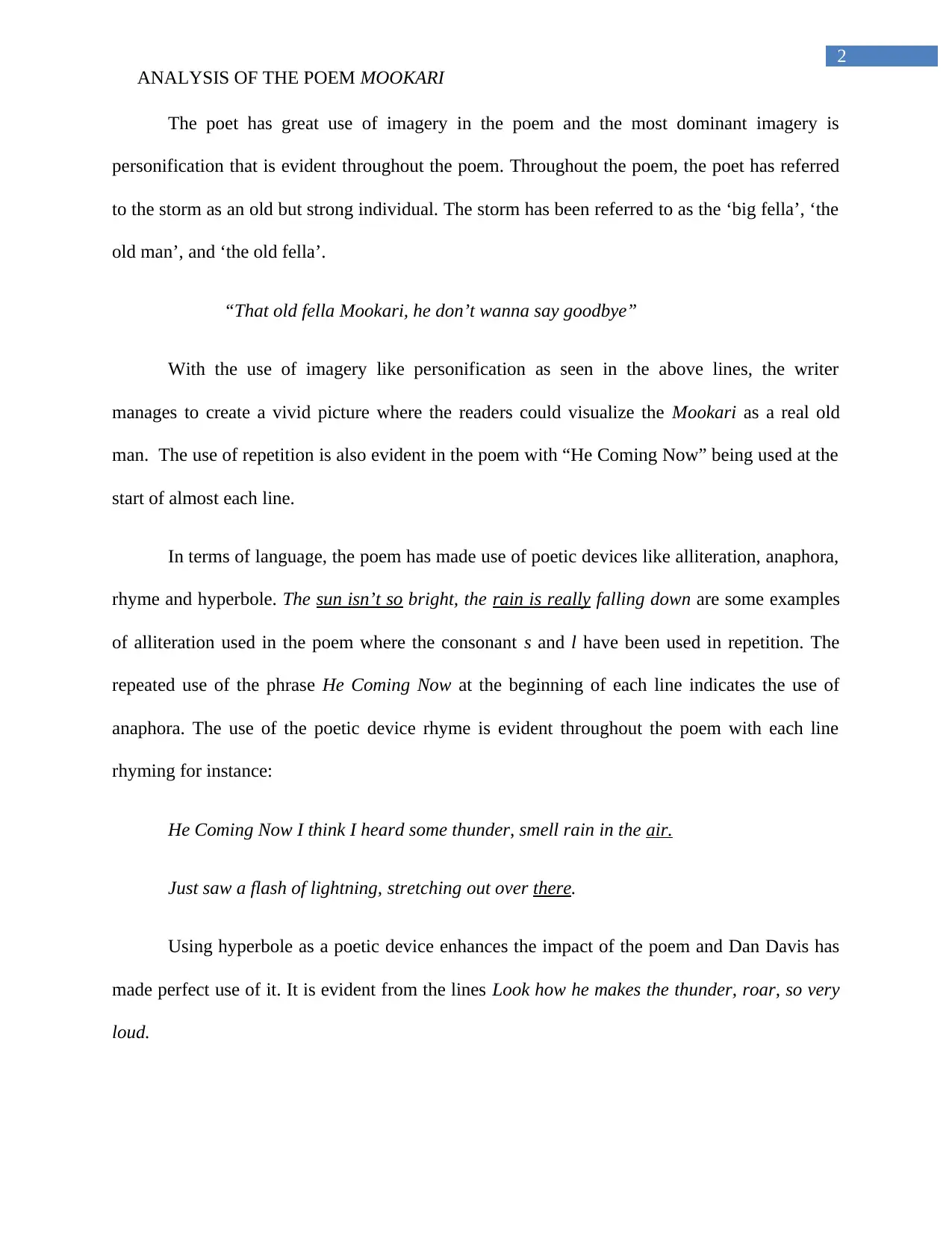
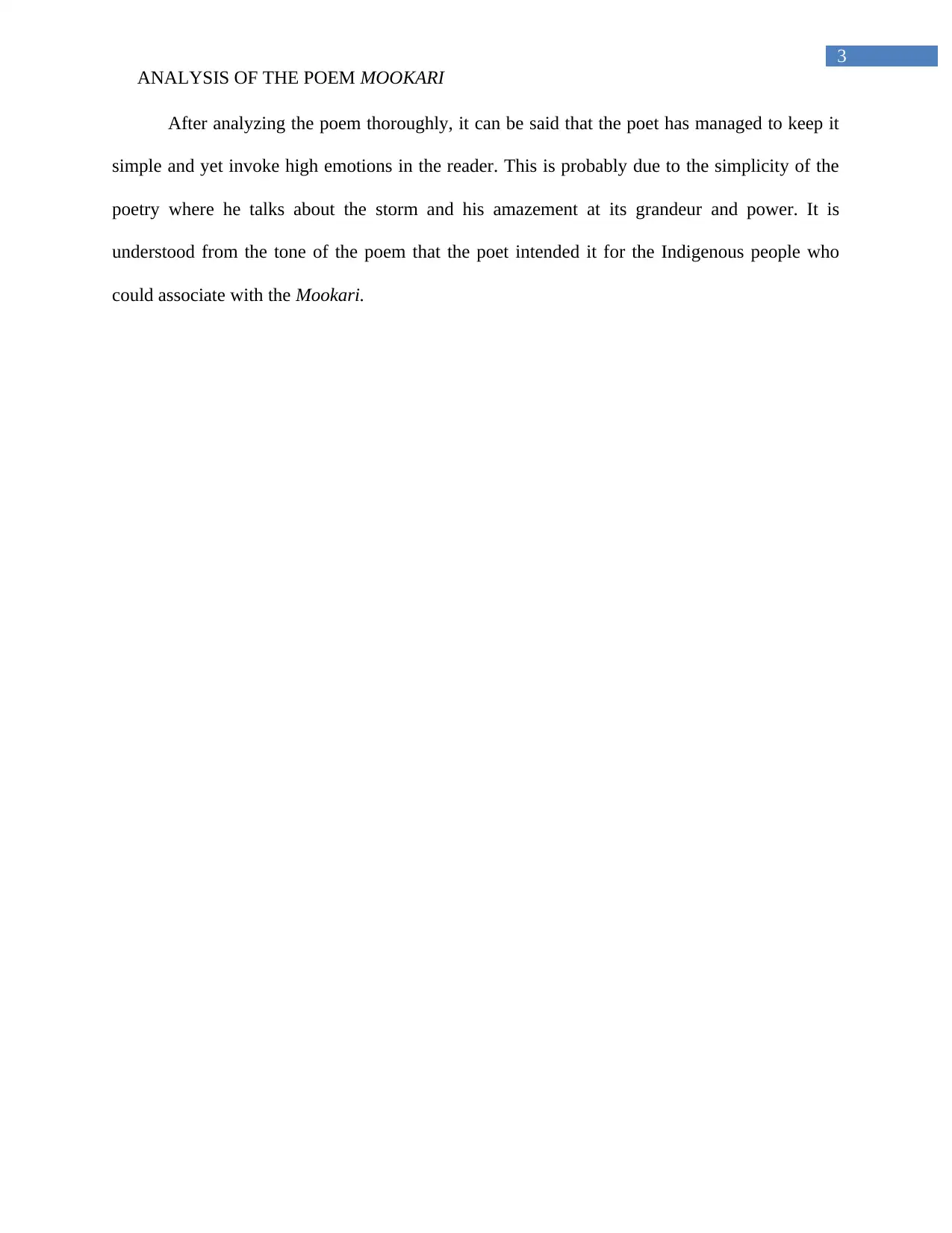
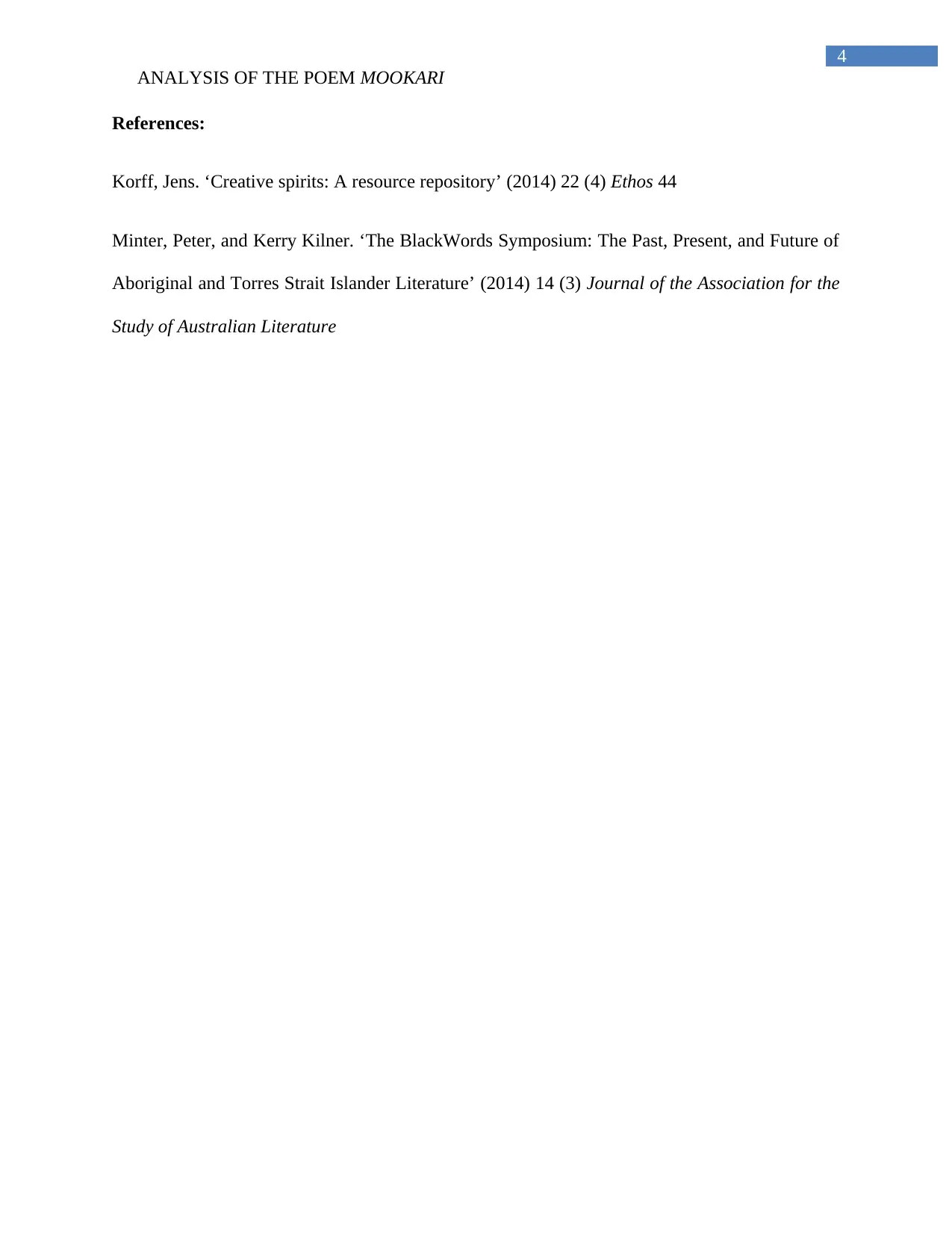

![[object Object]](/_next/static/media/star-bottom.7253800d.svg)